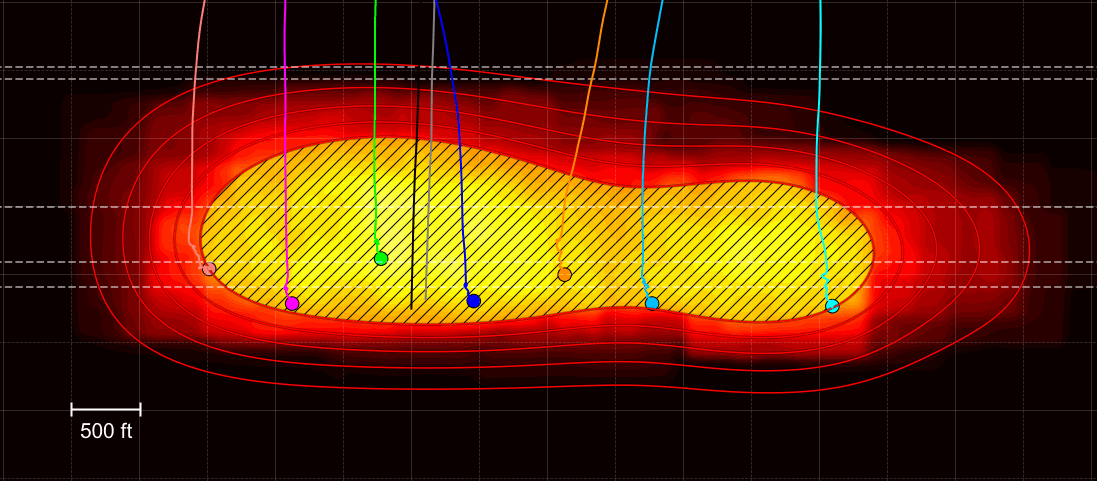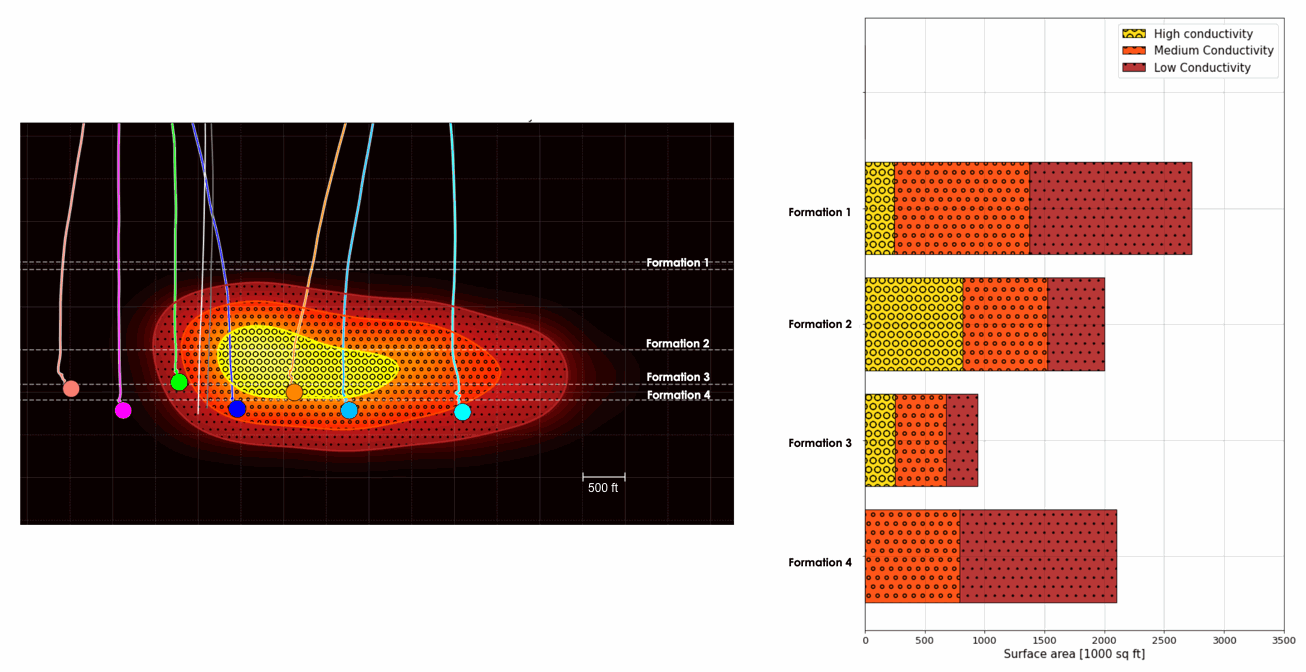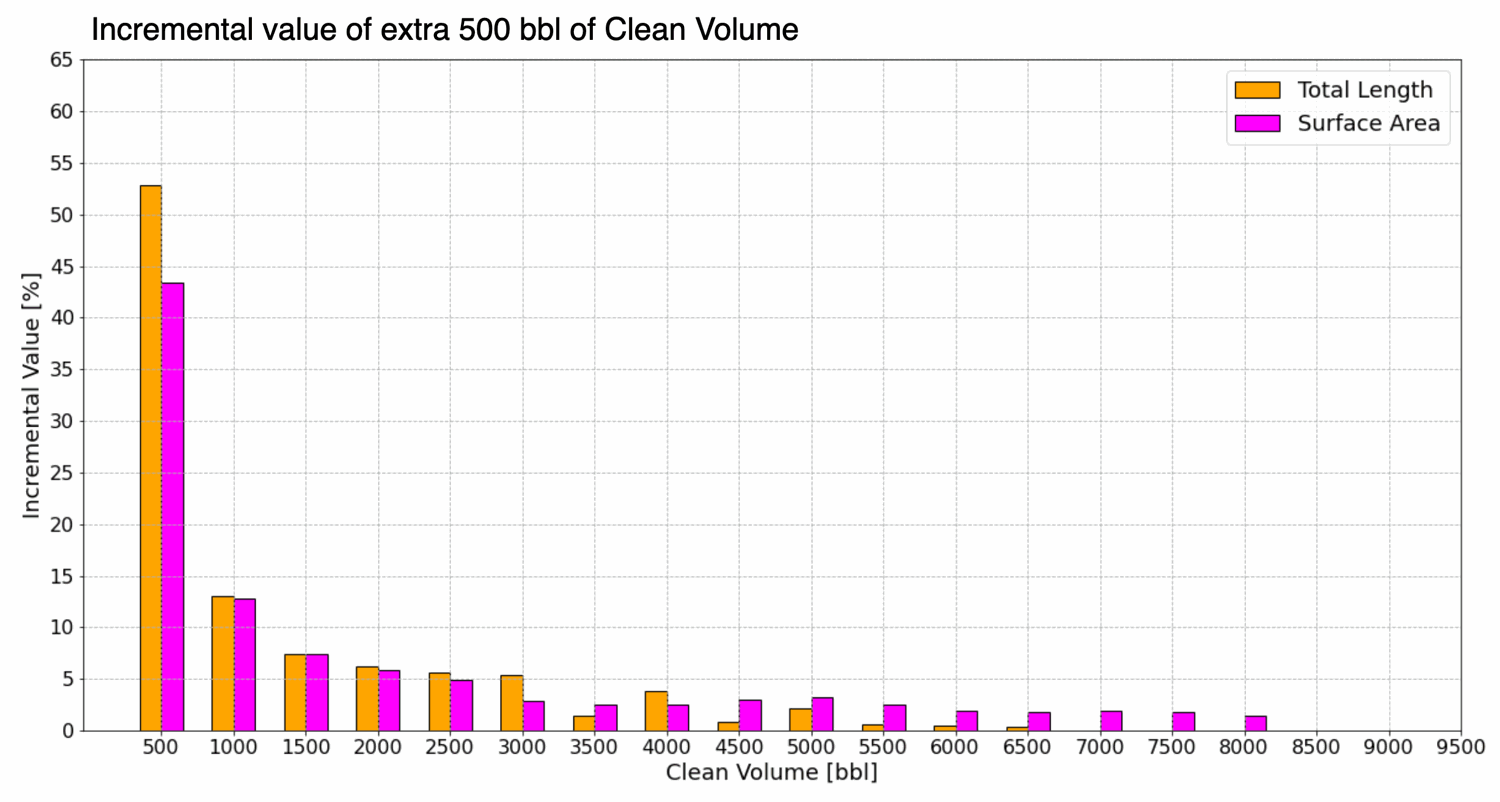Fracture Imaging Analytics
Analytics begins after imaging is complete. Using the fracture geometry and morphology results, we compute metrics that are directly relevant to field development. This work combines imaging output with additional data from the client such as treatment data, completion design groups, and other measurements like wellbore pressure.The analysis depends on the specific goals of the project. It usually starts with a defined set of questions, followed by additional requests as new patterns or features are identified. We work closely with the client throughout to ensure the results remain focused and informative.The sections below show examples of analytics we provide.



